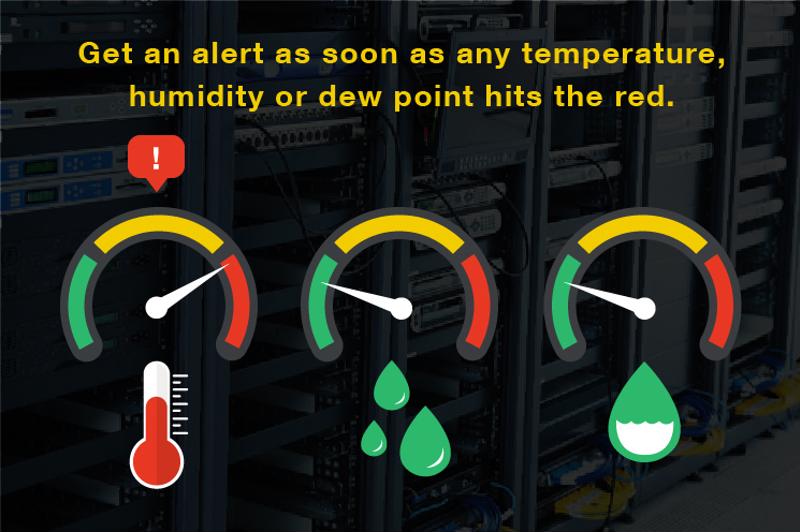Data center monitoring – top 3 reasons to deploy
Posted on April 27, 2018 by KVMGalore | 0 comments
Is there a real need for data center monitoring?
We've all heard data centers called "the backbone of the internet" at one point or another. But for many a modern business, these facilities are much more than that. They're the reason that some companies are able to exist at all. Shouldn't we have data center monitoring capabilities to make sure this vital asset operates flawlessly?
Organizations in all industries are more operationally dependent on data centers than ever before, and the proof is in the numbers. According to the Ponemon Institute, the average cost per minute of data center downtime is nearly $9,000. This sum is undoubtedly greater for businesses that rely almost entirely on web resources to function (for instance, consider application-based service delivery models).
There's just too much riding on the operational integrity of your facility to leave it up to chance. Simultaneously, there's a lot to be gained from the ability to continuously monitor your facility's health. Specifically, we recommend you use robust data center monitoring for the following three benefits:
1. Real-time environmental tracking
Mission-critical IT equipment is a lot like we are: It functions best under very specific environmental parameters. The difference is, many facility operators are still trying to push the limits of those environmental standards to improve operational efficiency. Up until fairly recently, data centers played things relatively safe, with the most conservative managers keeping their facilities at about 68 degrees Fahrenheit, and maintaining a relative humidity of 50 percent, according to Data Center Frontier. These were in line with ASHRAE recommendations for safe temperatures (which are non-binding guidelines).
However, many facility operators are learning that they can restructure airflow (e.g. by using rack containment chambers) to keep equipment running at higher temperatures without creating infernal conditions in maintenance aisles. This, of course, comes with its own set of risks, namely how quickly a facility will heat up in the event that the cooling system fails. Having a data center monitoring regiment in place can mitigate this risk.
While we can't necessarily tell you what approach is best for your infrastructure, we can make recommendations regarding the most important environmental conditions to monitor in real time to create an efficient operating environment that can fail safely. These include:
- Temperature: Monitor at six points in each rack (top, middle, bottom in both the front and back)
- Relative humidity: Measures the air's moisture saturation based on the current temperature (warmer air can hold more moisture than cool air).
- Dew point: The temperature at which moisture in the air condenses as dew.
2. Automatic alert systems

In the event that a threshold is exceeded that might put your data center operation or certain critical equipment at risk, designated staff need to know sooner than later.
For example, it's not enough to just track relative humidity, and check up on it from time to time to make sure everything is on the up and up. If relative humidity is too high, moisture may begin to collect on sensitive equipment, which could induce damage to circuits in the near term and corroded metal in the long term. Conversely, if relative humidity is too low, the air will begin to generate electrostatic charges that can damage sensitive electronics. What good would it be to learn this after it happens?
And that's where automatic alerting systems come into the picture. Using SMS, SNMP or email, staff can be remotely notified the second an environmental threshold reaches an unsafe level. This allows them to respond quickly to reverse the trajectory of an operational disruption while its still in the early stages.
3. Long-term operational integrity
There's some debate regarding the impact that certain environmental factors have on the long-term operational integrity of mission-critical equipment. Temperature, for example, is a point of contention. Many organizations have found that running servers and switches above 80 degrees Fahrenheit is not a detriment to their short-term or long-term performance. Based on our experience in the industry, though, some managers swear that it does.
But then there's the uninterruptible power supply (UPS) to consider. Despite its name, UPS failures have long been the top cause of data center downtime. There are several reasons for this. First, the UPS tends to be a little too out-of-sight, out-of-mind for many facilities. It's the sort of thing that you don't really use until you need it, and when you need it, you really need it.
Furthermore, unlike IT equipment, a battery-powered UPS is in fact highly sensitive to environmental conditions. They should be stored in conditions between 65 and 70 degrees Fahrenheit. Performance and battery life can suffer substantially outside these ranges. Considering the UPS is your last line of defense against downtime, deviating from this range is never a risk worth taking.
Finally, in regard to humidity, the issue is a little more cut and dry. As we pointed out, moisture doesn't play well with electrical circuitry. Years of over-exposure to humid air can cause sensitive electrical components to corrode and give out sooner than they should.
In short then, yes, environmental conditions can have a long-term impact on operational integrity of critical equipment. Deploy environmental monitoring systems to make sure that doesn't happen.





